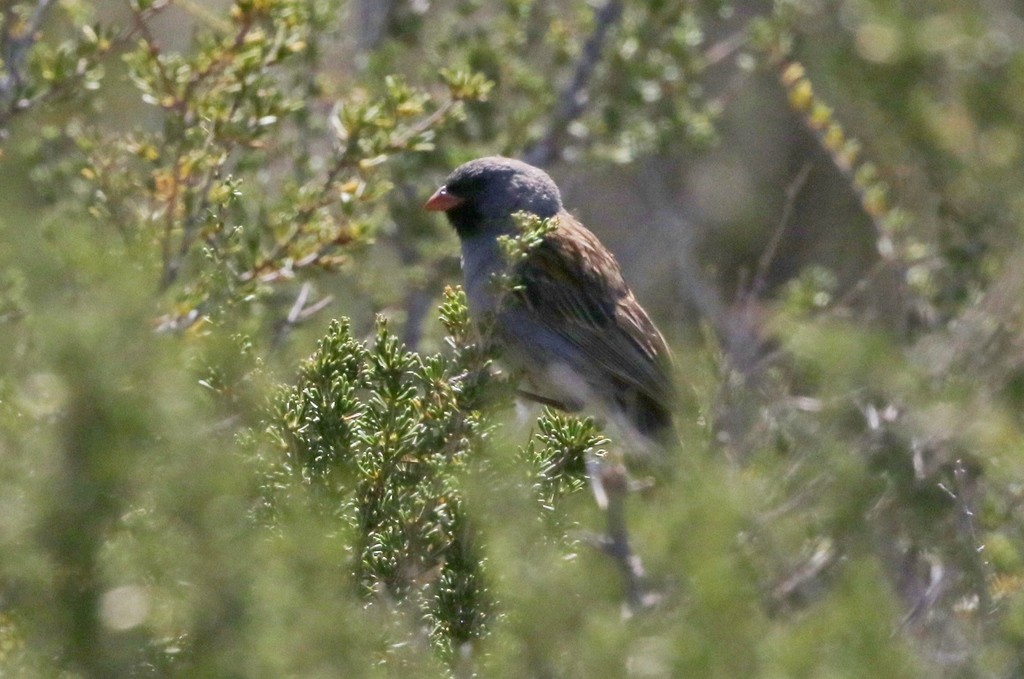Black-chinned Sparrow
A species of Spizella Sparrows Scientific name : Spizella atrogularis Genus : Spizella Sparrows
Black-chinned Sparrow, A species of Spizella Sparrows
Botanical name: Spizella atrogularis
Genus: Spizella Sparrows
Content
Description General Info
 Photo By silversea_starsong , used under CC-BY-NC-4.0 /Cropped and compressed from original
Photo By silversea_starsong , used under CC-BY-NC-4.0 /Cropped and compressed from original Description
The black-chinned sparrow (Spizella atrogularis) is a small sparrow. This passerine bird is generally found in chaparral, sagebrush, arid scrublands, and brushy hillsides, breeding in the southwestern United States (western Texas to southern California), and migrating in winter to north-central Mexico and Baja California Sur. There is also a non-migratory population in central Mexico. 
Size
15 cm (5.75 in)
Nest Placement
Shrub
Clutch Size
2 - 5 eggs
Incubation Period
1 brood
Number of Broods
12 - 13 days
Feeding Habits
Black-chinned Sparrow predominantly feed on insects during the breeding season, foraging from trees, shrubs, and the ground. In winter, their diet shifts to seeds from various grasses and flowering plants, which they glean while perched or on the ground.
Habitat
Black-chinned Sparrow thrives in arid regions, favoring brushy mountain slopes, open chaparral, and sagebrush dominions. They inhabit elevations up to 8,000 feet, from sea-level rises to rocky hillside terrains where breeding takes place. The vegetation within their habitat includes a mix of sagebrush, rabbitbrush, ceanothus, and other chaparral flora. During winter, black-chinned Sparrow moves downslope to desert scrub areas, adjusting to seasonal habitat shifts.
Nest Behavior
Both sexes of black-chinned Sparrow may participate in gathering materials for the nest. Egg-laying and timing of nest construction are not provided, but parental care likely involves both protection and feeding of the young.
Nest Characteristics
Black-chinned Sparrow's nests are typically found 2 feet above ground in dense shrubs. They craft a loose cup-shaped structure from grasses and stems, lined with finer grasses and soft plant materials.
Dite type
Insectivorous
General Info
Feeding Habits
Bird food type
Bird Feeder Type

Small Hopper

Small Tube Feeder

Platform
Behavior
Black-chinned Sparrow exhibit a tendency to be reclusive, commonly navigating through robust, shrubby landscapes without attracting much attention. Their daily routine encompasses cautious hopping from one bush to another, often avoiding open spaces. During the breeding season, males break this secrecy, boldly singing atop uncovered perches to proclaim their territory, thereby displaying a rare instance of overt behavior. Though pairing up for breeding, they maintain a solitary demeanor outside this period. Notably, wintertime brings a slight shift, as black-chinned Sparrow may gather in modest, uniform flocks for foraging.
Species Status
Not globally threatened.
Scientific Classification
Phylum
Chordates Class
Birds Order
Perching birds Family
New world sparrows Genus
Spizella Sparrows Species
Black-chinned Sparrow